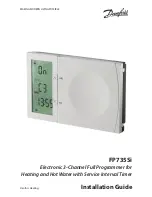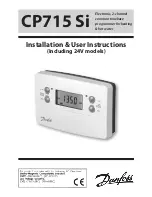
63
Single Channel Stepper Motor Controller
F.1.2 Positive and Negative Moves
Positive
and
negative
are used to describe the direction of a move. A positive move
means a move from a smaller absolute position to a larger one, a negative move
means the opposite.
In the case of a linear actuator, a positive move takes the platform of the stage further
away from the motor.
In a rotational stage, a positive move turns the platform clockwise when viewed from
above.
F.1.3 Velocity Profiles
To prevent the motor from stalling, it must be ramped up gradually to its maximum
velocity. Certain limits to velocity and acceleration result from the torque and speed
limits of the motor, and the inertia and friction of the parts it drives.
The system inco rporates a traje ctory generator, which performs calculations to
determine the instantaneous position, velocity and acceleration of each axis at any
given moment. During a motion profile, these values will change continuously. Once
the move is complete, these parameters will then remain unchanged until the next
move begins.
The specific move profile created by the system depends on several factors, such as
the profile mode and profile parameters presently selected, and other conditions such
as whether a motion stop has been requested. The profile mode can be set to
‘Trapezoidal’ or ‘Bow Index’ as described in Section 5.3.1.
The
Trapezoidal
profile is a sta ndard, symmetrical acceleration/deceleration motion
curve, in which the start velocity is always zero. This profile is selected when the
Bow
Index
field is set to ‘0’.
In a typical trapezoidal velocity profile, (see Fig. 5.4.), the stage is ramped at
acceleration ‘
a’
to a maximum velocity ‘
v’
. As the destination is approached, the stage
is decelerated at ‘
a’
so that the final position is approached slowly in a controlled
manner
.
Fig. 6.2 Graph of a trapezoidal velocity profile
velocity
maximum
velocity (v)
time
acceleration (slope) a










































